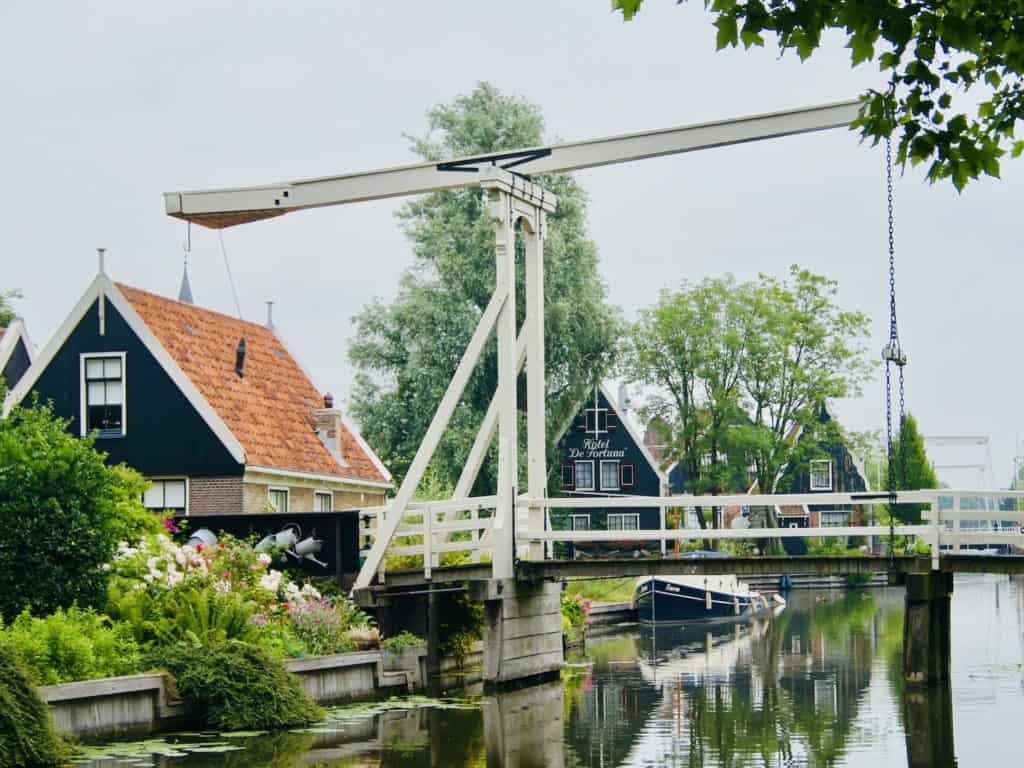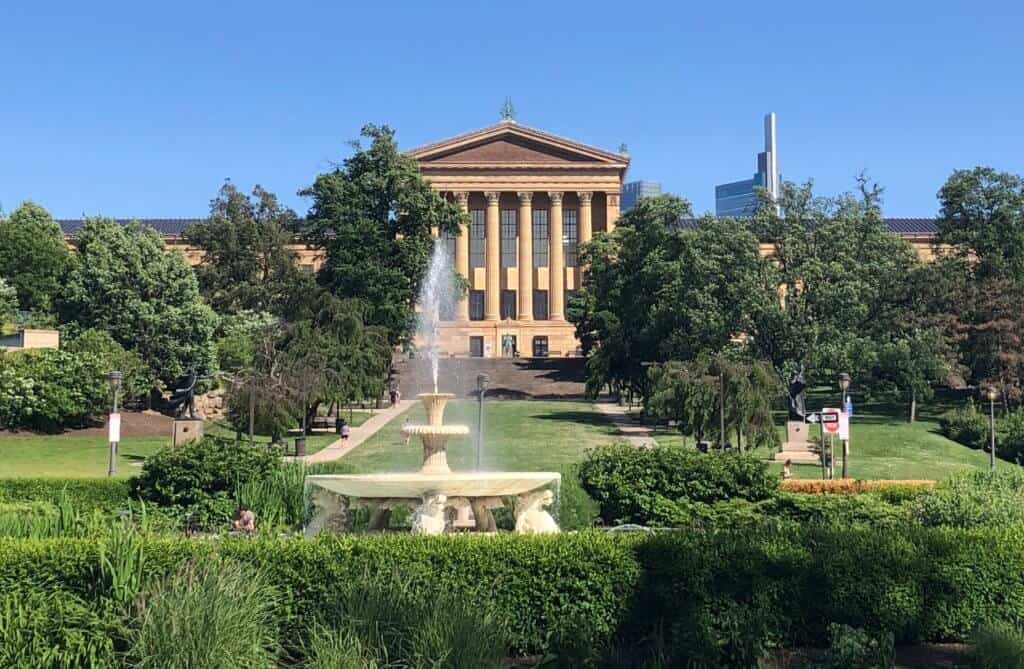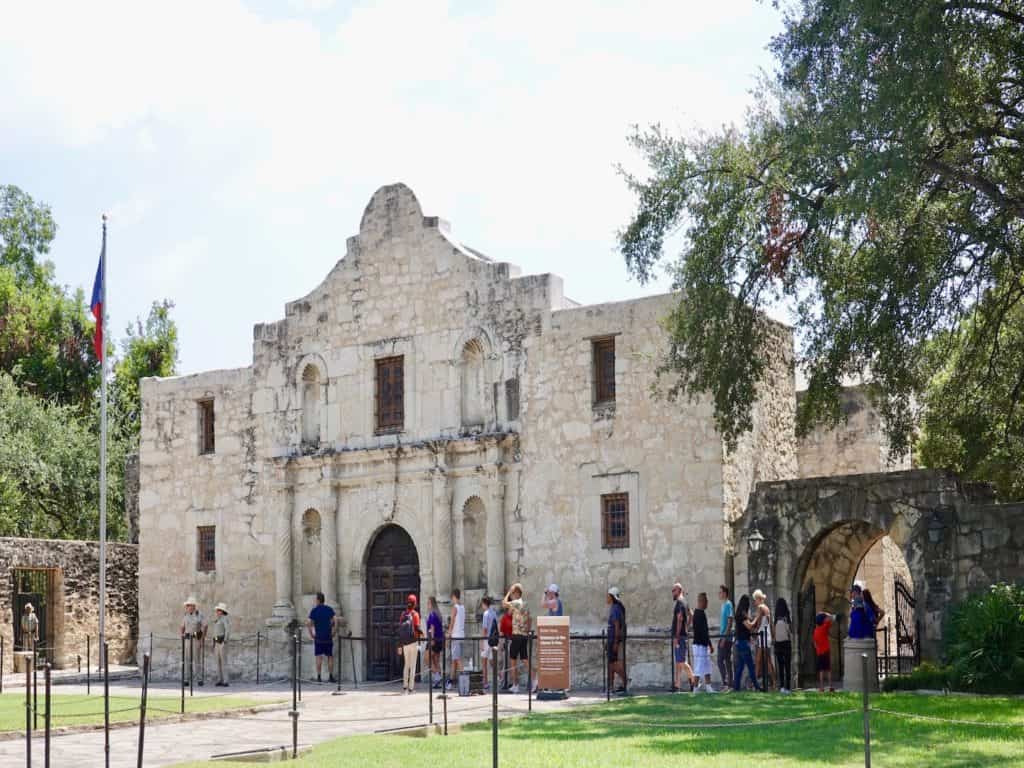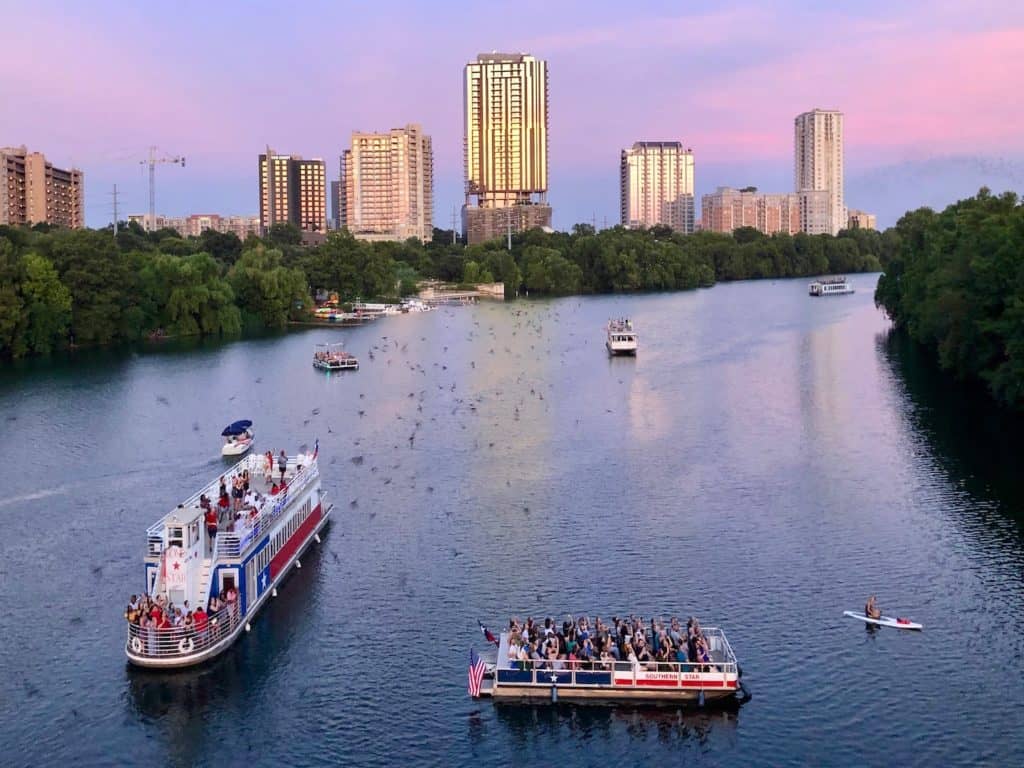One of the most visited historic homes in the United States is Mount Vernon, the home of George Washington, the Commander-in-Chief of the Continental Army during the American Revolutionary War, president of the Constitutional Convention (where the U.S. constitution was written), and the man who became the new nation’s first president. Therefore, he is known as the Father of the Country. Just outside Washington, D.C. along the Potomac River in Virginia, Mount Vernon is a wonderful place to visit to capture a feeling of what it must have been like for George Washington and his wife, Martha, and all the others who would call this place home.
Plus it’s a place where visitors can gain a good understanding of how some (wealthy) families lived in the late 18th century. You can walk through his home and view his gardens, his farm, his wharf on the Potomac River, his tomb, and the many outbuildings that supported his home and business interests. Along the way, you gain a better understanding of the enslaved people who lived and worked here, as well.
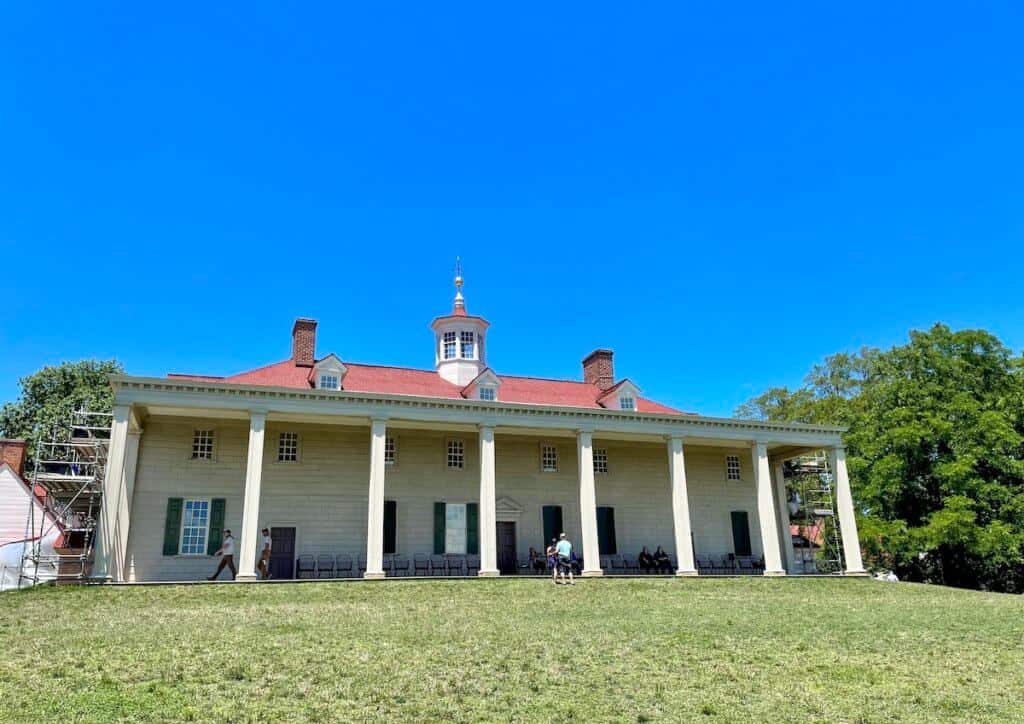
Pleasantly Situated
Washington loved Mount Vernon and longed to return to it whenever he was away. In 1793, he wrote, “No estate in United America is more pleasantly situated than this…on one of the finest Rivers in the world.”
Planning Improvements
George Washington was a planner and a doer in many aspects of his life. Regarding Mount Vernon, he spent a lot of time designing expansions and enhancements to his home and surrounding property. Besides a place for his family to reside, the estate had to accommodate his enslaved people as well have buildings to house the many functions required by such a household in the 18th century. In addition to planning for his household, Washington studied and experimented with new ideas regarding his business interests that included agriculture and fishing.
Washington’s Household
The Mansion
The small home that George Washington inherited (a one-story home with four rooms and a foyer) in 1761 served as the seed of its growth over the coming years. (More detail on the expansion is listed in a later section of this post.)
Today the mansion is staged as it would have been in 1799, the year George Washington died.
Guided tours of the mansion are available and require tickets. Whether you step inside the mansion or not, take time on the two-story porch to enjoy the very same beautiful view of the Potomac River that Washington’s family and guests enjoyed.
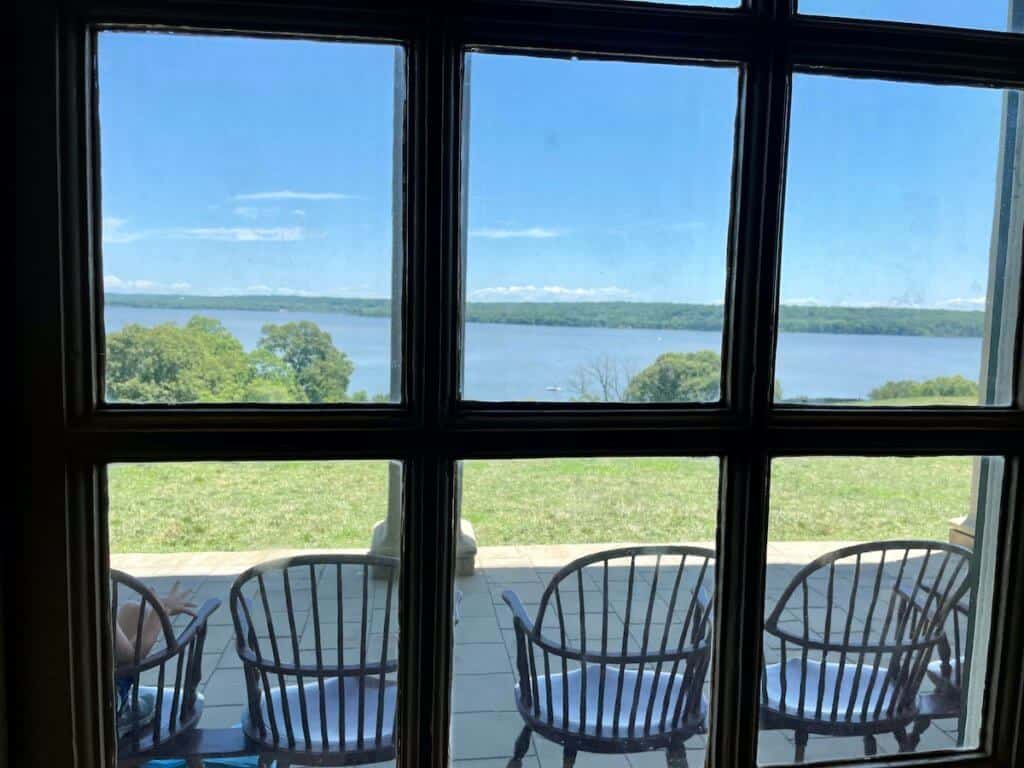
First Floor
Upon entering the New Room, today’s visitors — like George Washington’s guests centuries ago — are bound to be impressed. This is a two-story room that served as a place to entertain visitors. It has a large Palladian window and its ornamentation includes symbols of agriculture — one of Washington’s keen interests and his major sources of income. After Washington died in 1799, his body was laid to rest in a coffin in this room.
The Front Parlor was a favorite room for the Washingtons and a place where they gathered in the evenings to read, catch up with each other, and discuss what was happening beyond their home. Once a bedroom, the Little Parlor was later used as a music room. The Old Chamber was a guest bedroom, and the Dining Room next door was where the family typically took their meals. Washington’s Study was where he read, managed much of his business enterprises, and enjoyed quiet time alone.
In the foyer, called the Central Passage, a framed key to the Bastille is displayed. This was a gift from the Marquis de Lafayette in 1790. Oftentimes, the Washingtons had the Central Passage exterior doors opened to capture cooling breezes during the hot summer months.
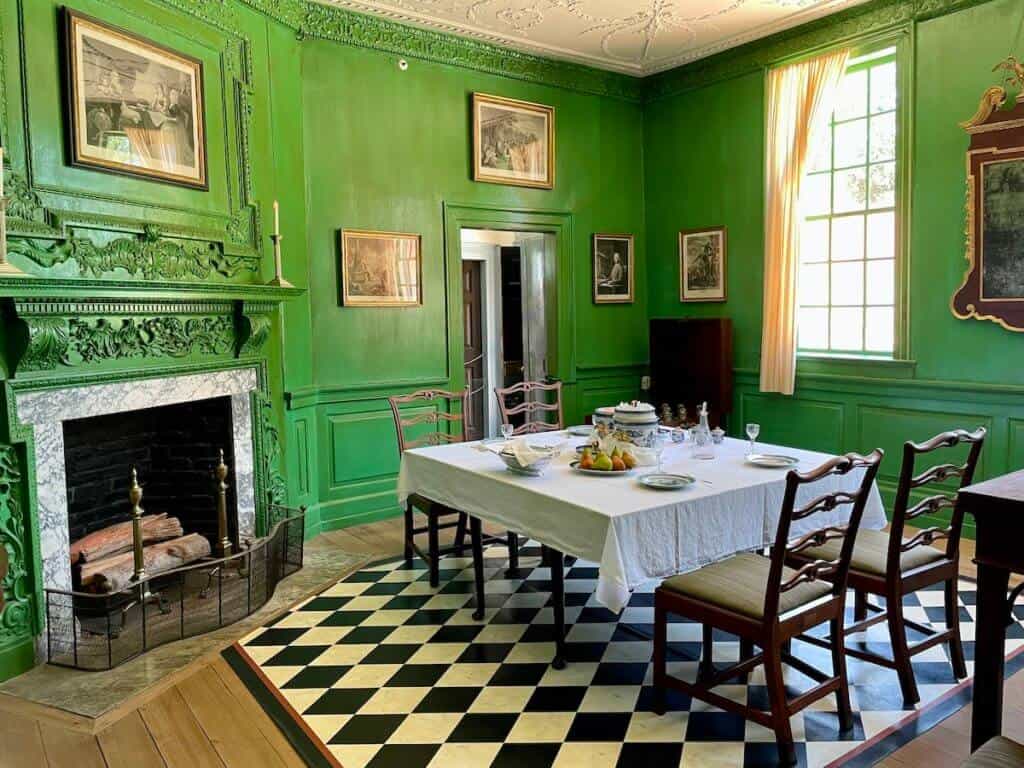
Second Floor
The second floor houses George and Martha’s bedroom (as well as other bedrooms for their family and guests). Interestingly, there is a hidden staircase from George and Martha’s bedroom to his study below. This convenience enabled him to go down to his study after waking up in the morning, get dressed (he kept his clothes there), and attend to matters that needed his attention, without distractions or disturbances.
He died in his bed on December 14, 1799 after a short illness. After he passed away, Martha chose not to sleep in the bedroom again; instead, she chose another bedroom.
One takeaway I had when visiting was the liberal use of color and patterns for the walls and upholstery in the mansion. This was true for most of the house — all except George and Martha’s bedroom that was simply decorated in whites.
Looks Like Brick, But It’s Not
As with many historic properties, Mount Vernon requires regular maintenance. Therefore don’t be surprised if you notice work projects when you visit. When my husband and I visited, there was scaffolding on the north and south sides of the mansion. Workers were repairing the exterior using a rustication process. Washington saved construction costs by making the mansion look as if it’s built with brick, but it’s actually a wooden exterior. Rustication involves carving beveled edges into wooden logs, and then applying paint mixed with sand to give the wood a grainy texture, mimicking brick. Much of the house’s imitation brick are authentic to Washington’s time.
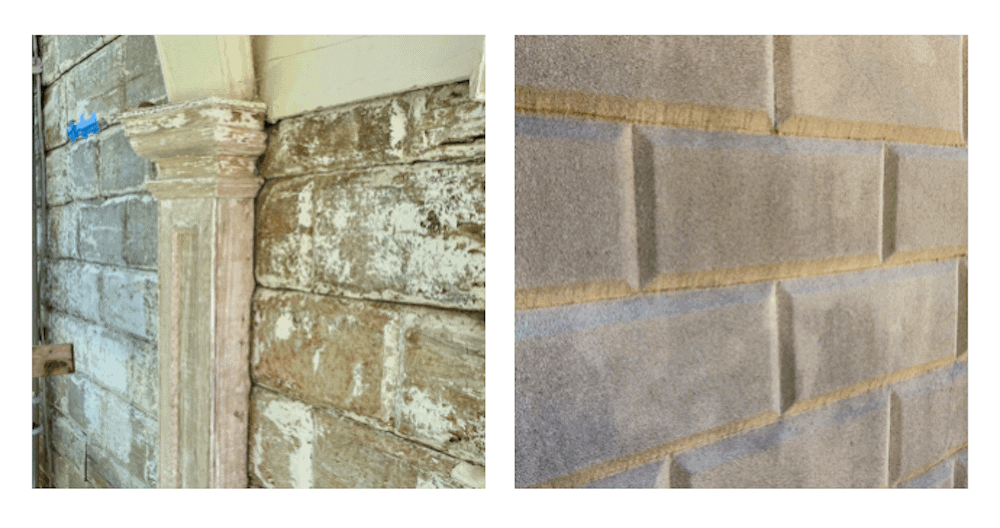
Supporting Washington’s Household
There are numerous outbuildings to visit including those for trades (like shoemaking, blacksmithing, washing, and spinning thread and yarn) as well as the kitchen, slave quarters, coach house, stable, and barn.
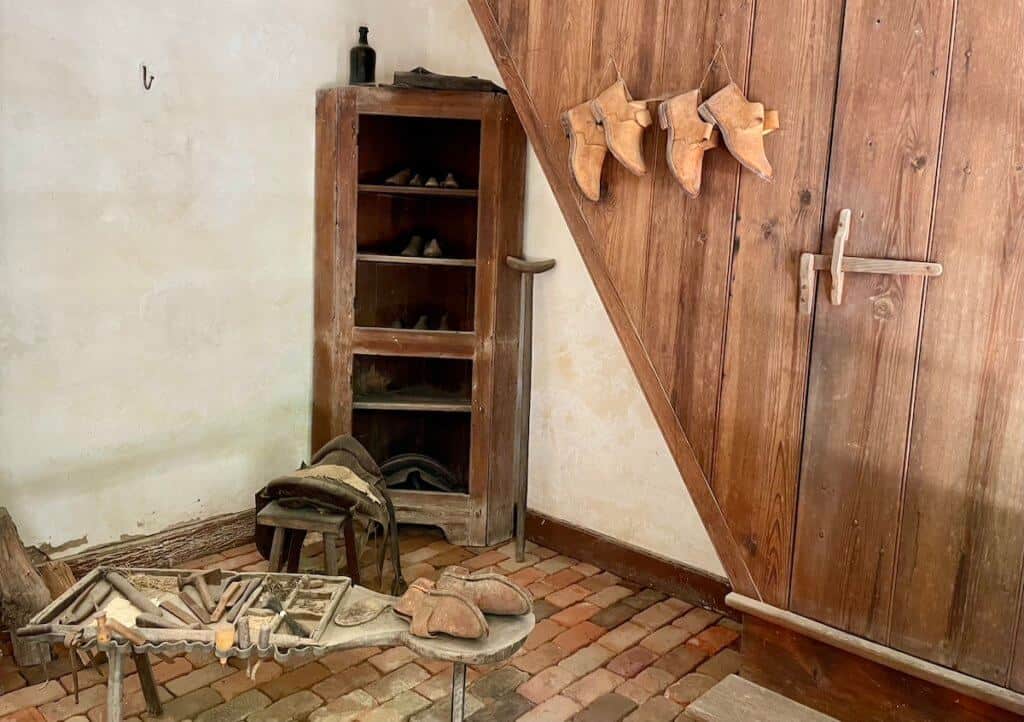
In addition, there were four gardens that are still maintained today:
- Upper Garden, a formal garden with a variety of plants including flowers along with fruit trees and vegetables. The garden followed a rigid symmetrical plan, and trimmed dwarf boxwood shrubs served as borders for the beds and, in some cases, strong visual interest since some were trimmed to create intricate, symmetrical designs.
- Lower Garden, a kitchen garden that provided much of the fruits and vegetables consumed at Mount Vernon.
- Botanical Garden, a small space where Washington explored different varieties of plants.
- Fruit Garden & Nursery, a four-acre area to accommodate trees and other plants that required a lot of space to grow.
- A large brick greenhouse and other garden houses supported the gardening effort. The greenhouse provided protection for young plants as well as a place for tropical plants (like orange and lemon trees) to grow year-round despite the season.
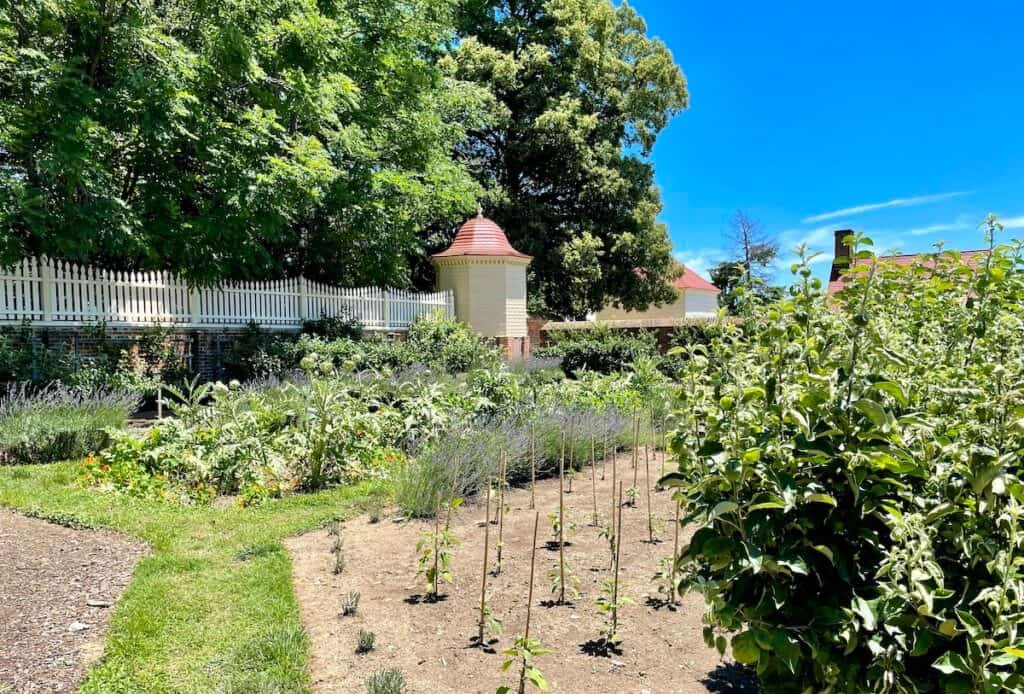
Washington’s Business Interests
Among other things, Washington considered himself a farmer and he strived to learn more about different types of plants and how to grow them in the Virginia climate. He was one of the first in the region to move away from the soil-depleting tobacco crop to other more appropriate crops. Also, he was one of the first to apply crop rotation methods.
Furthermore, being located on the Potomac River provided him with an abundance of fish — some of which was consumed at Mount Vernon, but much of it was preserved and sold.
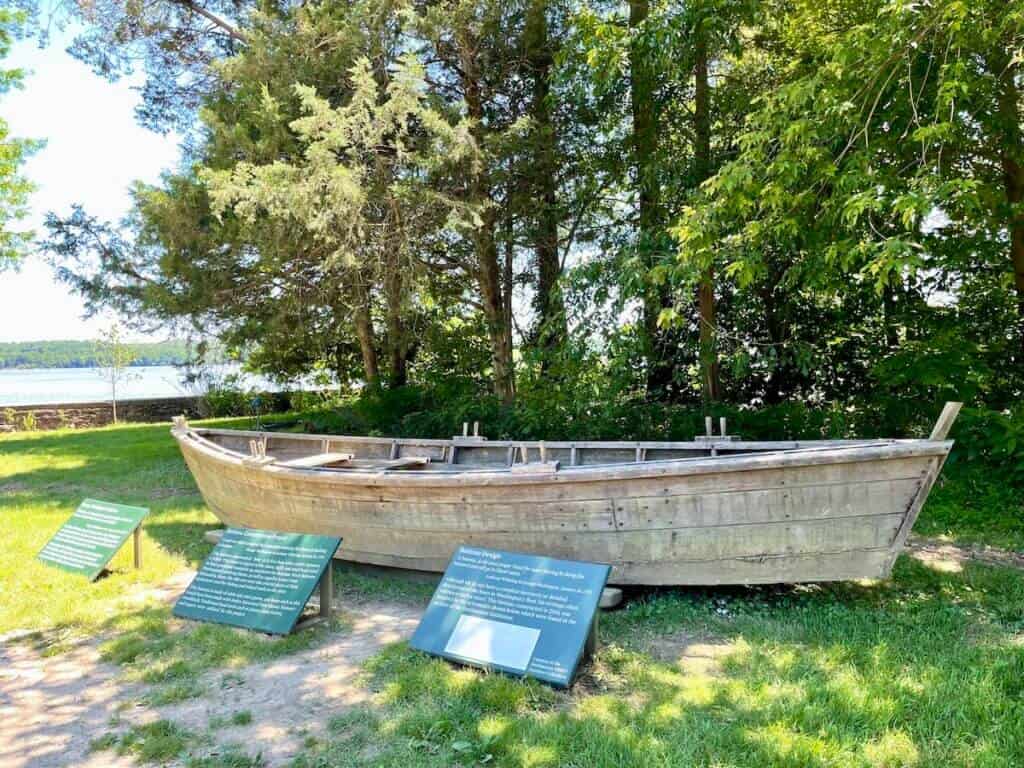
Agriculture and fishing provided a profitable enterprise for Washington. There are several places at Mount Vernon for visitors to learn more about these enterprises.
- A short walk from the mansion and the gardens, the Pioneer Farm is where Washington experimented with farming techniques (like crop rotation), tools, and agricultural plants.
- Washington designed a two-story 16-sided barn (that from a distance looks to be round) to process grain grown on the farm. From this innovative idea came a greater efficiency of the process, making it more profitable. (What visitors see today is a recreation of the barn Washington had built for him.) The second level had a slatted wooden floor. This is where the grain was placed after harvesting. Then, work animals would walk in a large circle on the second floor, treading upon the grain, resulting in it separating, with the seeds falling through the slats to the solid wooden floor below. After that, the grain would be further processed before being taken to the grist mill to be ground into cornmeal and flour. Processing the grain in the barn also helped protect it from weather (and mud) outside and keep it clean and dry.
- The wharf was an important component in Washington’s successful business endeavors. It provided a place from which to launch boats that were used for catching the abundant amount of fish from the Potomac River for household use and commercial sale. In addition, it enabled access to the river for easily receiving and transporting goods to and from other markets.
- Not far from wharf is a boat shelter where visitors can learn more about the different types of boats used at Mount Vernon.
- The distillery and grist mill are reconstructions and located about three miles from Mount Vernon itself. They are open on most weekends from April to October and have a separate admission fee.
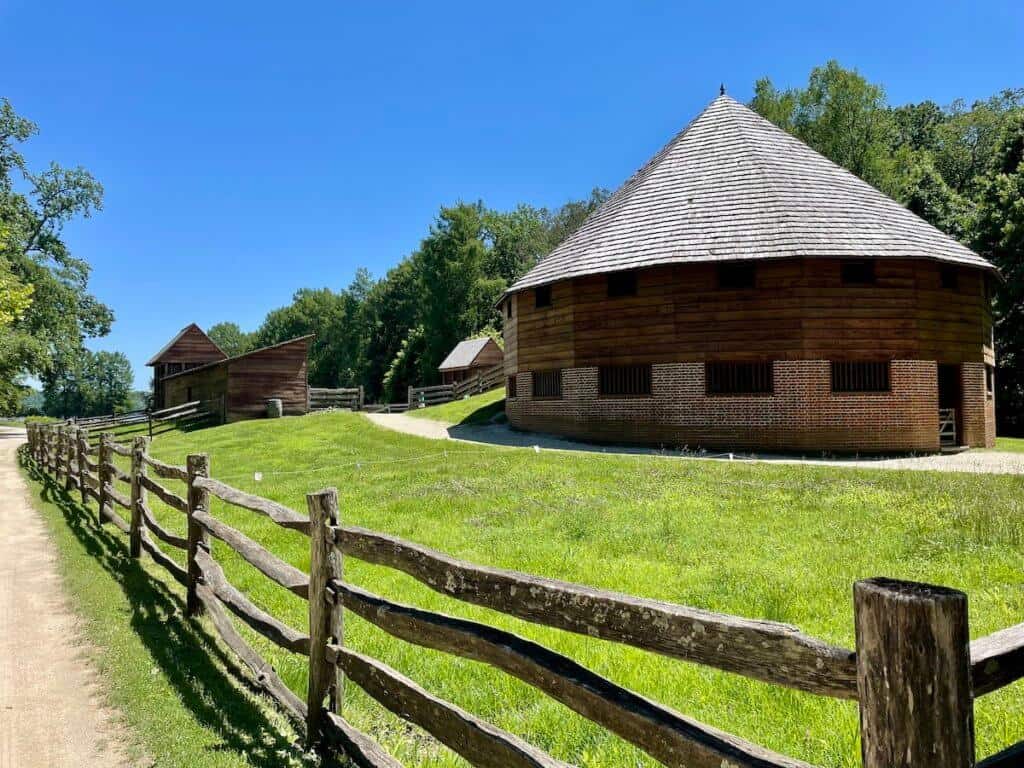
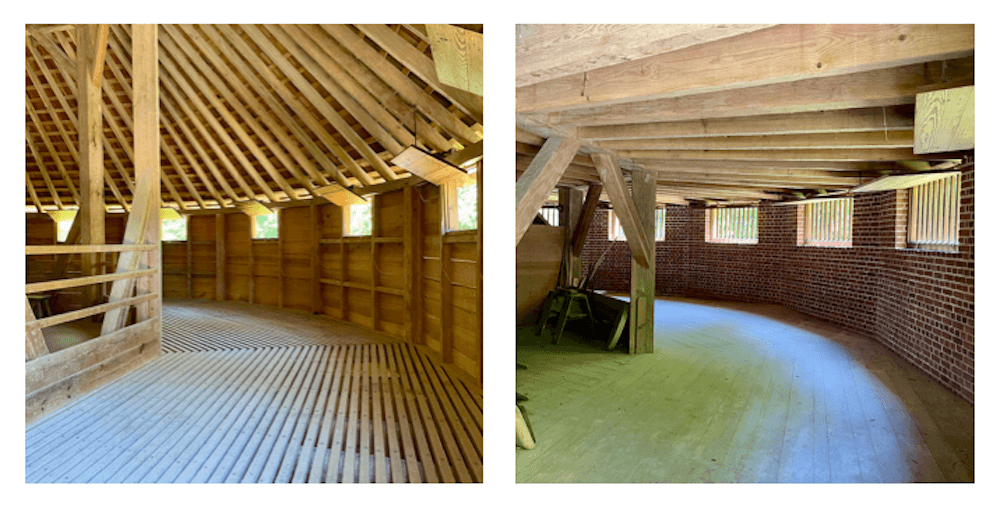
Washington’s Tomb
Also on site are two tombs. Down by the river, the stone Old Tomb had been used for family members for much of the 18th century. It was used for Washington’s body, too, after he died. However, his will directed that a new, larger tomb be built of brick elsewhere on the property. The new tomb was completed in 1838, and the remains in the Old Tomb were moved to the newer structure.
The Washington Tomb is where George and Martha Washington are buried along with some family members. Mount Vernon holds a daily wreath laying ceremony at the New Tomb. It’s a short ceremony that encourages visitor participation.
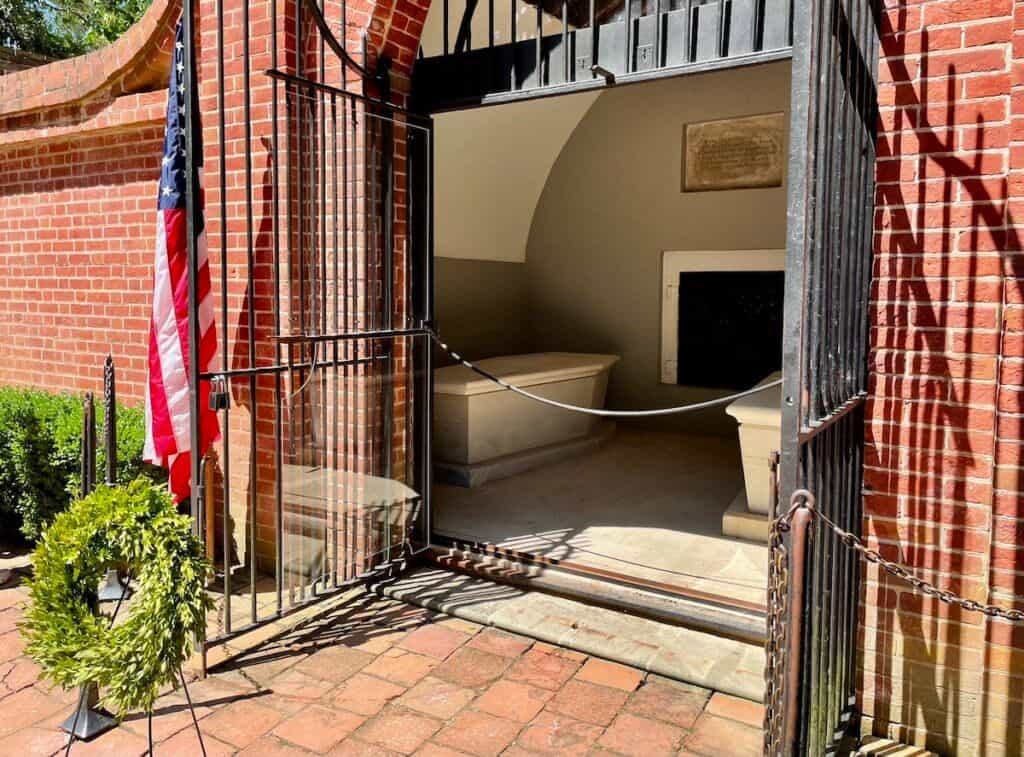
18th Century Graffiti
While at the Washington Tomb, check out the “graffiti” in the bricks. During the Civil War, soldiers from both the Union and Confederate armies came to Mount Vernon to pay their respects. They checked their guns at the gate and covered their “colors” (uniforms) as this was considered a non-fighting zone. Washington was that much of a hero to so many that soldiers from both sides of the national conflict came to Mount Vernon. While there, some soldiers carved their names in the bricks.
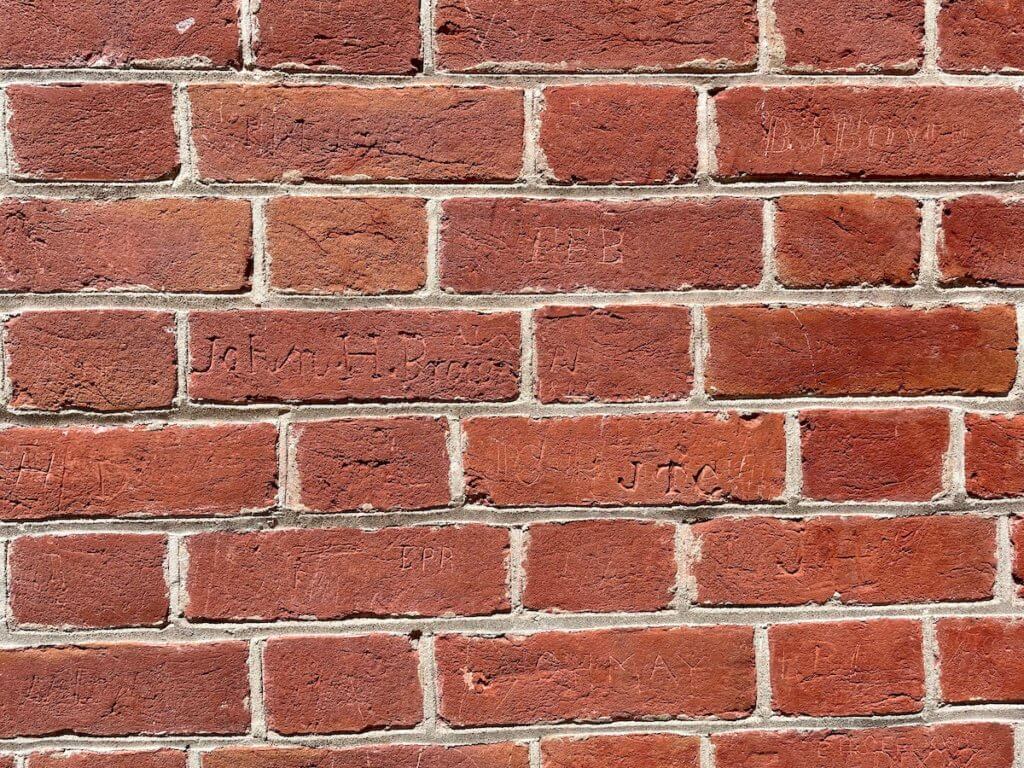
Slavery at Mount Vernon
The success of George Washington’s plantation was due in large part to the work performed by enslaved people. George owned hundreds of slaves in his lifetime. (Martha came to their marriage with enslaved people of her own, inherited from her deceased first husband.) The Washingtons depended on their efforts to run the household, cook for the family, sew clothes, make shoes, work the land, and more. In some cases, the enslaved people lived communally in brick structures, and in other cases, they lived in buildings where they worked during the day.
George Washington’s will stipulated that his slaves be freed upon Martha’s death (although Martha freed them little more than a year after he died). However, this action did not apply to everyone enslaved at Mount Vernon. Those owned by Martha (inherited from her first husband) were another matter because his will had decreed that the enslaved people should not be sold or freed. After Martha’s death, her descendants inherited her enslaved people.
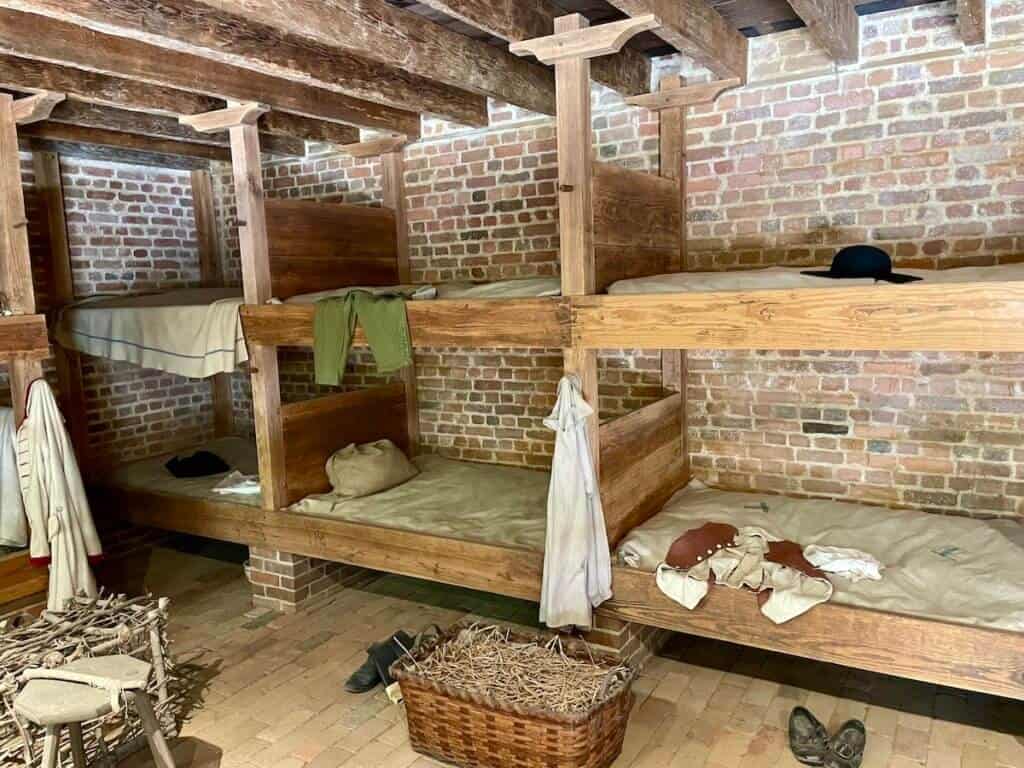
Mount Vernon remembers those who were enslaved by calling them by name on tours, explaining what they did, and showing how and where they lived. In fact, Mount Vernon’s website has detailed information about the enslaved people at the sprawling estate.
There’s a slave memorial and cemetery on the property. In 2014, Mount Vernon began a project to discover exactly who is buried in the slave cemetery. The goal is to create a map of their locations, so that those lives can be remembered and honored.
Other Attractions at Mount Vernon
Museum & Education Center
The museum and education center have exhibits and displays that explain various aspects of George Washington’s life, the lives of the enslaved people who lived and worked at Mount Vernon as well as Washington’s shifting views of slavery. Plus there’s an interesting interactive experience where visitors can learn about the challenges Washington was faced with as a military and political leader. Visitors can participate by weighing the pros and cons of situations being presented on screen and decide how they’d react to the dilemmas. Furthermore, there’s a 4-D multimedia production focused on the Revolutionary War.
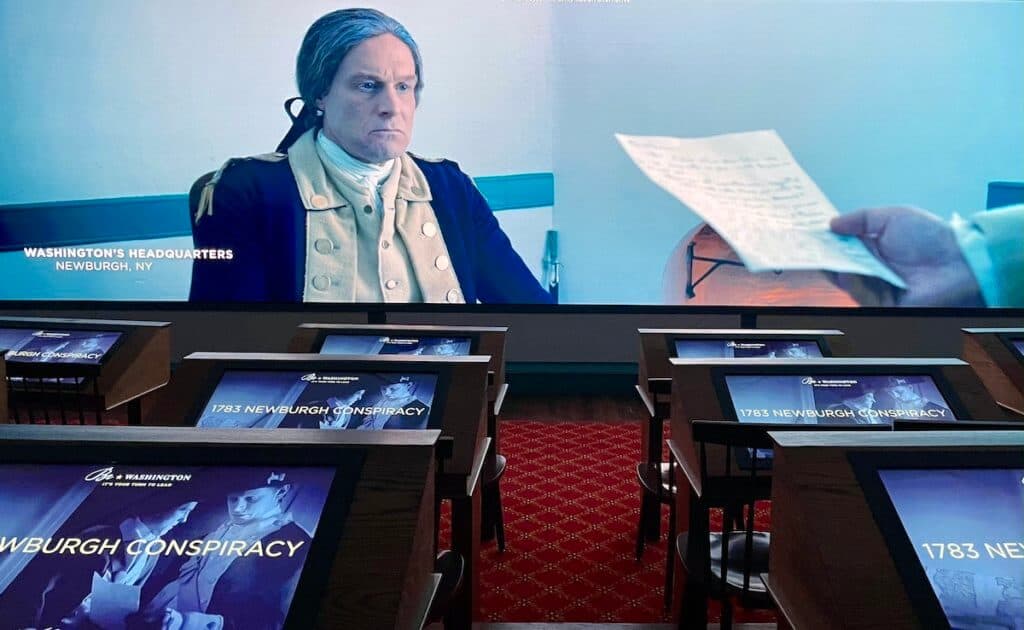
Restaurants
Visitors have a couple good options for dining at Mount Vernon:
- Mount Vernon Inn Restaurant for a full-service dining experience offering lunch, dinner, and weekend brunch.
- Food Court Pavilion offers grab-and-go food like salads, burgers, and pizza. You can eat your food inside or at an outside terrace.
Gift Shop
The gift shop offers an extensive selection of books, gifts, home decor and more.
The Distillery & Grist Mill
As mentioned, the distillery and grist mill are a few miles away from the Mount Vernon estate. They’re open on most weekends from April to October.
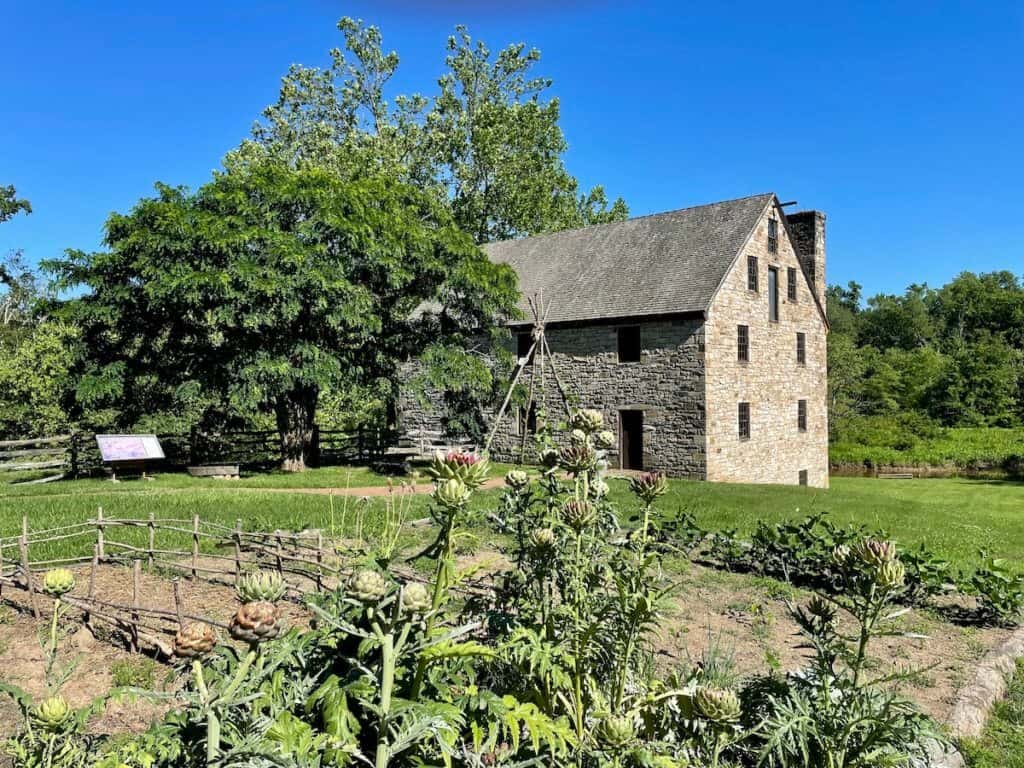
Brief History of Mount Vernon
The original structure was built for George Washington’s father in 1734 when George was just a toddler. It had four rooms and a foyer, called a central passage at the time. After his father’s death, when Washington was 11, his older step-brother Lawrence inherited the property. It was Lawrence who named the dwelling Mount Vernon after an admiral he admired. Eventually, in 1761, Washington inherited the property from Lawrence’s family.
The Property Grows
At Mount Vernon that meant expanding the footprint of the home and the property itself. In fact, Washington added 8,000 square feet to the original house and 4,000 acres to the original property.
He designed several major renovations that resulted in raising the roof to add a story to the main house thereby creating more bedrooms, a garret (attic), and a two-story piazza facing the river. Furthermore, he added wings on the north and south ends of the house to increase living and entertaining spaces.
Changing Ownership
Upon George’s death, Martha inherited the estate. Just three years later, she died, and the property passed to George’s nephew. Ownership continued through successive family members until the mid-19th century.
In the mid-1800’s, Ann Pamela Cunningham formed the the Mount Vernon Ladies’ Association and raised funds to purchase the property from George Washington’s great-grandnephew. The property opened to the public in 1860.
Preserving the View
Since the 1950s, there have been threats to the magnificent vista from the mansion across the Potomac River. Washington so cherished that view. And visitors over the years have come to love it, as well. It seems fitting that the Mount Vernon Ladies’ Association has fought development attempts (including a sewage treatment plant!) across the river and also nearby. They want to preserve the property (and its views) for future generations. By doing so, all can learn more about the man (and things he enjoyed) who did so much to form and lead the young country in the 18th century.
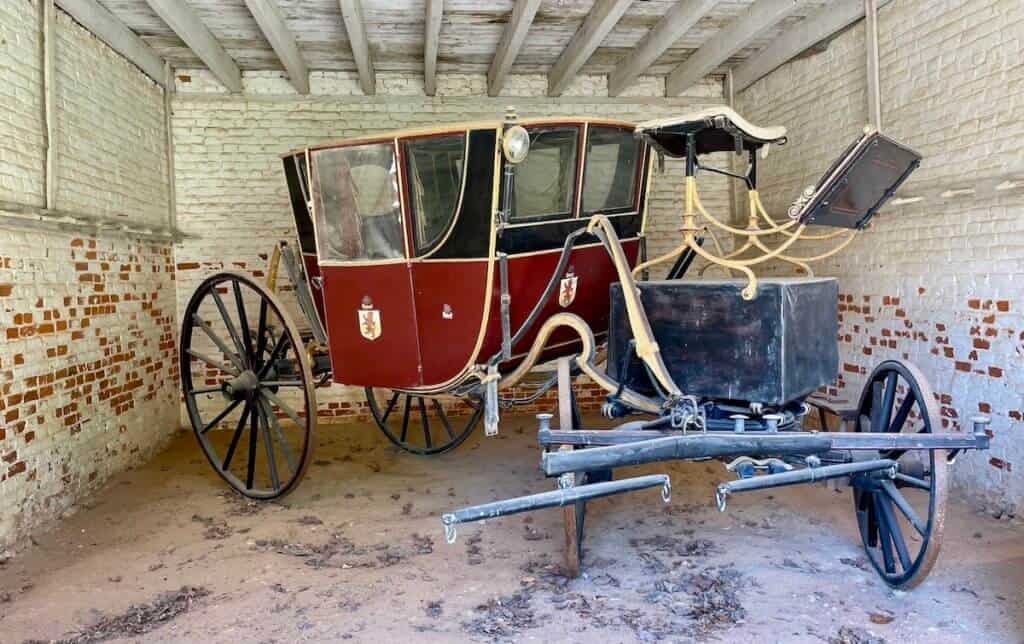
Planning Your Visit
- Expect to spend a minimum of 3-4 hours at Mount Vernon. In fact, I’d suggest you plan to make a day of it. There’s so much to see: the mansion and grounds as well as the museum and education center. Remember, there are a couple of places for dining so that you can keep your energy up all day.
- All visitors must buy a Grounds Pass to enter. Tickets for a mansion tour (plus the off-site grist mill and distillery) are separate. Also, check out special events offered on the day of your planned visit.
- Purchase your tickets online ahead of time (if possible) to guarantee your choice of time for a guided tour of the mansion.
- An interactive map of Mount Vernon will help you get acquainted with the property as you plan your day.
- Consider viewing the virtual tour to gain a little more background before or after visiting.
- When you arrive, you’ll receive a detailed paper map showing the location of all the places available to visit.
- There’s a Mount Vernon app you can download with some good resources for your visit.
- Wear comfortable shoes as there’s a lot of walking.
- Bring along bottled water. (No other outside beverages or food are allowed.)
- An umbrella would be handy in rainy weather because most of your visit will be outside.
- A shuttle runs from the education center to the farm throughout the day.
- Visit by driving, biking, or by boat. Do an online search if you’re interested in a bus tour from Washington, D.C. or other locales.
- Leashed dogs are welcome with some exceptions. 🐶
- Check out Mount Vernon’s accessibility features before your visit, if interested.
- Parking is free.
Location
Mount Vernon is 8 miles from Alexandria, VA; 18 miles from Washington, D.C.; 55 miles from Baltimore; and 96 miles from Richmond. The address is 3200 Mount Vernon Memorial Highway, Mount Vernon, VA.
Related Articles
There are additional interesting options when planning your visit. For example, we visited Mount Vernon on a visit to the D.C. area and walked to 16 amazing monuments in town. Plus, there are more inviting spots a short drive away.
- Annapolis – a charming, quaint, historical town that offers lots of history and sailing fun along with excellent dining and shopping.
- Charlottesville – Explore America’s colonial history by visiting the estates of three of the country’s founding fathers, walking and hiking scenic trails, and visiting some notable wineries.
- Charlottesville Trails: Take a Walk Back in History – Discover some inviting trails at historical estates — Thomas Jefferson’s Monticello, James Monroe’s Highland, James Madison’s Montpelier — and nearby parks.
- Charlottesville Wineries: Sensational Sips in Virginia’s Heartland – Visit one — or all — of the top ten wineries in the greater Charlottesville area.
- Great Falls Park – a scenic park overlooking spectacular waterfalls and the Potomac River with plenty of trails.
- The Historic Triangle: Jamestown, Williamsburg, Yorktown
- Norfolk – Close to Virginia Beach, Norfolk is lively with three top attractions: Chrysler Museum of Art, Nauticus Maritime Museum (with a retired U.S. battleship to tour), and the Norfolk Botanical Garden.
- One Week in Historical Virginia – Consider our itinerary for a fabulous visit to this special part of the state.
- Southern Maryland – further south of Annapolis, along the western shore of the Chesapeake Bay, sits a delightful area with 17th-century American history (Historic St. Mary’s City) as well as marine and nautical history, lighthouses to visit, and fossils to hunt! Yep, that’s right!
- 16 Best Monuments and Memorials in Washington, D.C. – Visit a few or all of these great monuments, including the most recent ones. Use this guide to plan your visit!
Final Thoughts
Mount Vernon has been a draw for my husband and me when we’re in the general Washington, D.C. area. We took our kids there to expose them to this interesting history when they were youngsters (many years ago). And we’ve stopped by several times since then. Each time we visit, we come away with a few more insights. Also, we gain a renewed appreciation for the efforts of those who have continued to preserve this special part of American history.
On our last visit, we enjoyed a wonderful lunch at the Mount Vernon Inn Restaurant before entering the grounds. At the conclusion of our tour of the mansion and grounds, we went to the museum and education center. Plan to spend some time here after strolling the estate. You’ll learn still more about Washington and hot topics that plagued the young country and its leader.
Comments?
Please share your experiences and suggestions for other places to visit in the area. Your ideas could be helpful to other travelers. Thanks! 🙂

